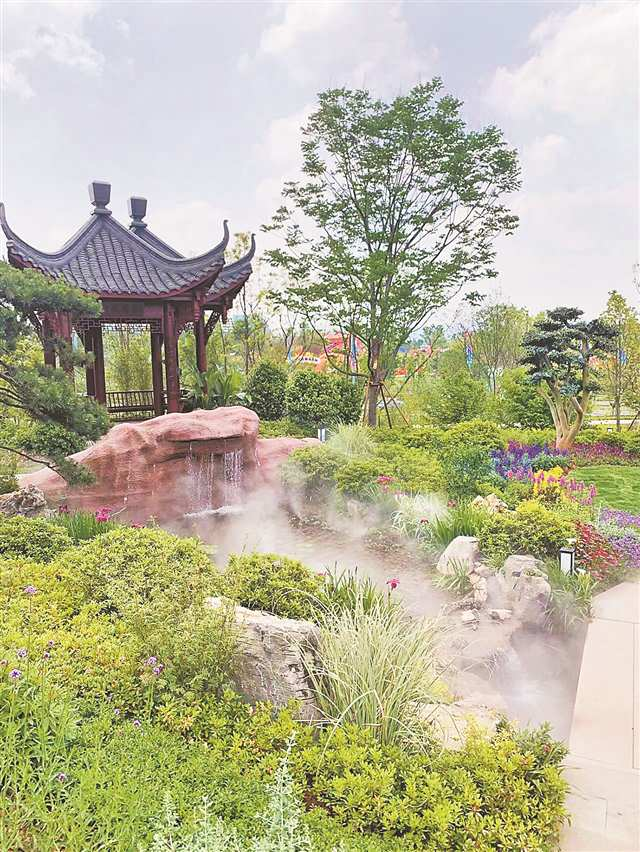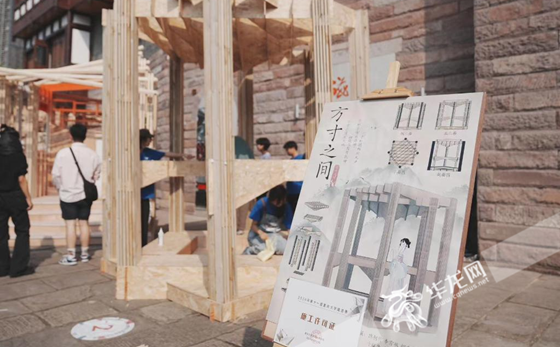"Chongqing Garden" unveiled at the International Horticultural Exhibition 2024 Chengdu
2024-04-29 16:58:57

CHONGQING (CQNEWS) -- The International Horticultural Exhibition 2024 Chengdu staged its grand opening on April 26. Covering an area of 3,500 square meters, the "Chongqing Garden" with the theme of "Colorful Mountain City, Flower Blooming Habitat" was unveiled.
As one of the 113 theme exhibition gardens of this Expo, what are the characteristics of "Chongqing Garden"? The reporter inquired about this.
A "standing up" scenery interprets the characteristics of the mountain city
Entering "Chongqing Garden", a mini version of "Mountain City" comes into view.
"Chongqing Garden" is built on the mountain, with a winding upward trend, forming an overall height difference of about 7 meters. Landscapes such as colorful mesas, foggy streams under the forest, landscape bonsais, and flower-filled residences present Chongqing’s unique landforms from multiple angles.
Tao Li, the chief designer of "Chongqing Garden", said that during the design of "Chongqing Garden", three levels of recreational space were constructed: mountaintop view, mid-mountain tour, and river beach convergence. This landscape design presents a "standing up" landscape, vividly interprets the local characteristics of "a land of natural bounty, a city with cultural appeal" and demonstrates the development achievements of urban gardening.
"Bashan Tower, the highest point in the park, is based on the Kansheng Tower in Eling Park, known as the Backbone of Chongqing. The name Bashan combines the concepts of mountains and rivers of Chongqing," Tao Li said. The design of Bashan Tower is integrated with the traditional Bayu landscape features. By simulating the highest point, it creates a variety of height differences and overlaps with other areas, thereby forming a "standing up" visual effect.
Native and rare plants appear simultaneously
"The plant with blue-purple flowers in front is Chongqing Iris. Its leaves are very wide and have good covering effect." Tian Zhong, a senior engineer at the Chongqing Landscape and Gardening Research Institute, said that Chongqing Iris is a characteristic native plant specially brought to the Expo.
A total of 25 species of uneven-aged arbors, 38 species of shrubs, and 215 species of flowers are planted in the "Chongqing Garden". More than 20 species of native plants are fully utilized to create regional landscapes, such as Chongqing Iris, giant lily, and Strobilanthes japonica. In addition, the "Chongqing Garden" also displays a variety of unique regional species, including rare (endangered, critically endangered) plants such as maidenhair fern, east Sichuan Primula mallophylla, Nanchuan Artocarpus nanchuanensis, etc.; aromatic plants such as Zhongxian citrus, Beibei wintersweet, etc.; medicinal and edible plants such as Shizhu coptis, Pengshui Perilla frutescens, Xiushan honeysuckle, etc.
Fully demonstrate the "technical style"
“Chongqing Garden” also has many “black technologies”.
"What you see when you enter the gate is the cavernous space." Ai Lijiao, director of the Chongqing Landscape and Gardening Research Institute, said. "Chongqing Garden" simulates the landscape effect of the river bank, allowing water bodies such as beaches, streams, ponds, springs, waterfalls, etc. to gather at the water intake through the height difference of the garden's topography, and slowly penetrate along the green space, showing the Bayu Landscape characteristics and the sponge city construction achievements.
In addition, the park also uses Internet of Things technology to accurately control environmental factors such as temperature and humidity.
Besides, "Chongqing Garden" also utilizes three-dimensional information simulation technology to summarize the key ecological parameters of the Yangtze River Riparian zone and replicate the ecology of the riverbank Riparian zone; Utilizing plant construction techniques in fragile mountainous habitats to improve the flowering period of plants in low-light areas under the forest. (Translated by Liu Xilin, Fathom Language Limited)
Editor:江夷玮

 手机阅读分享话题
手机阅读分享话题